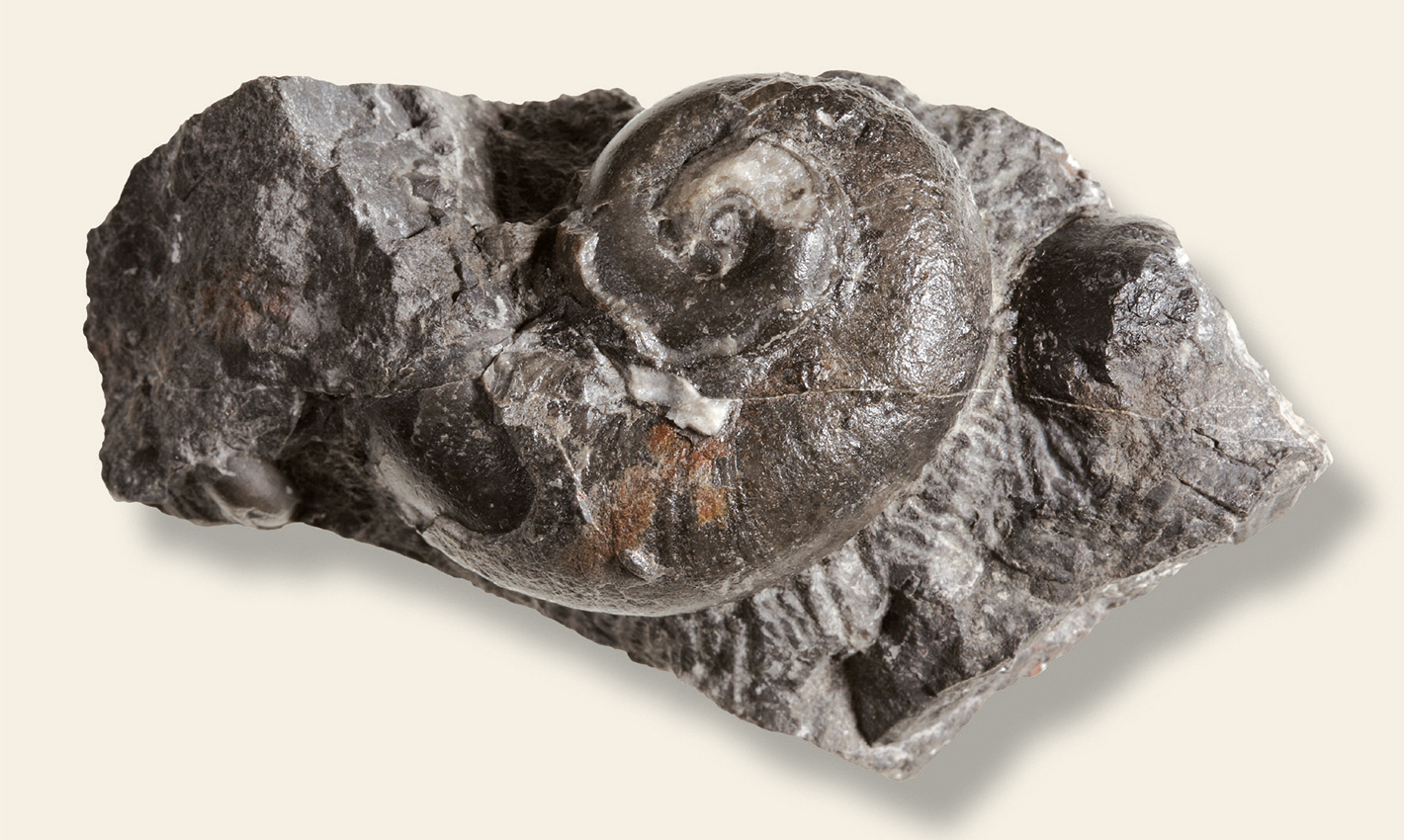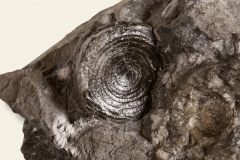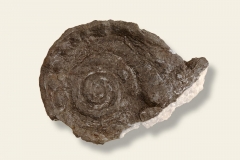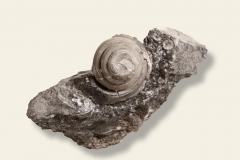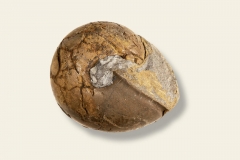Gastropods
BackMorphological characteristics
The Gastropods are a class of Molluscs. These organisms live on the seabed, in fresh waters, on land (in the form of slugs and snails), or floating like plankton (pteropods). Most Gastropods have a shell. The head may be fitted with sense organs on the head, consisting of eyes and tentacles, and also possess a large foot used for locomotion. The head and foot can be withdrawn into the shell through a large opening. Breathing takes place via gills. The classification of Gastropods is mainly based on the morphology of the soft parts, which do not fossilize.
Chronological distribution
Gastropods appeared in the Lower Cambrian, becoming common particularly from the Mesozoic on, and are still widespread today in saltwater, freshwater and terrestrial environments.
Their locations within the Geopark area
The fossils of these Molluscs are very frequent and are found in rocks ranging from the Silurian to the Norian-Rhaetian. They have been found at various sites within the Geopark area. For a more detailed consultation of the territorial data, go to the Geopark’s WebGIS.
Some of the most significant fossils of Gastropods from the Geopark area

